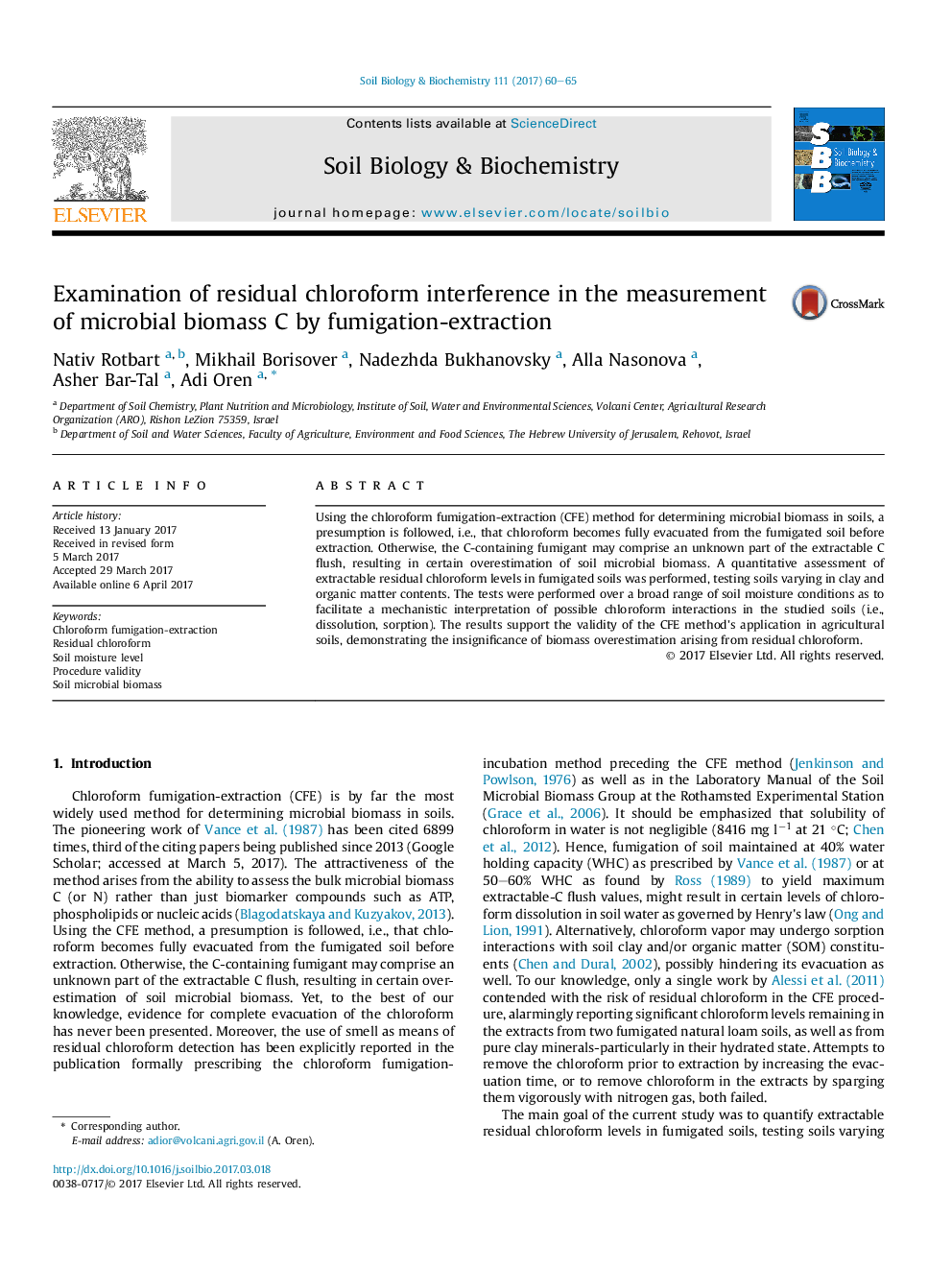| Article ID | Journal | Published Year | Pages | File Type |
|---|---|---|---|---|
| 5516285 | Soil Biology and Biochemistry | 2017 | 6 Pages |
â¢Residual chloroform was quantified in the fumigation-extraction method using GC-MS.â¢CHCl3-C comprised up to 0.6% of the extractable-C flush.â¢No risk of biomass overestimation in agricultural soils due to residual chloroform.â¢Chloroform may persist by sorption to dry soil or by dissolution in very wet soil.â¢Results support the fumigation-extraction method's validity.
Using the chloroform fumigation-extraction (CFE) method for determining microbial biomass in soils, a presumption is followed, i.e., that chloroform becomes fully evacuated from the fumigated soil before extraction. Otherwise, the C-containing fumigant may comprise an unknown part of the extractable C flush, resulting in certain overestimation of soil microbial biomass. A quantitative assessment of extractable residual chloroform levels in fumigated soils was performed, testing soils varying in clay and organic matter contents. The tests were performed over a broad range of soil moisture conditions as to facilitate a mechanistic interpretation of possible chloroform interactions in the studied soils (i.e., dissolution, sorption). The results support the validity of the CFE method's application in agricultural soils, demonstrating the insignificance of biomass overestimation arising from residual chloroform.
